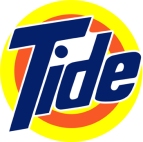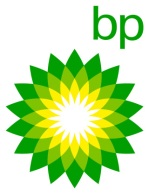The three artists I’m choosing to focus on in from the exhibit called Portraiture Now: Asian American Portraits of Encounter at the National Portrait Gallery are Roger Shimomura, Hye Yeon Nam, and Zhang Chun Hong. Mr. Shimomura uses bright, pop arty- colors and simplified shapes to create images of characters in popular American and Americanized Asian culture with his face or his likeness incorporated somewhere into the image. Hye Yeon Nam uses video and sound to transform extremely basic daily activities, walking, drinking, eating, and sitting, into physically tedious, confusion-inducing events and thus creating commentary on cultural expectations. Zhang Chun Hong featured charcoal drawings on scroll of long, black women’s hair and thus creating commentary on life and vitality.
Within this exhibit, each of these artists serves very different purposes.
Mr. Shimomura’s work provides a Haring-esque energy from clean colors and bold black lines and frames on every piece featured. Images featured are either an iconic American image, such as Leutze’s George Washington Crossing the Delaware, as seen through a lens of more traditional Japanese art. Mr. Shimomura places himself as the figure in profile facing the left side of the frame while standing in a boat in colonial garb. However the figures rowing the boat differ greatly from Leutze’s original image in that, while they perform the same action, they are the greater focal point of the piece. The nine figures tasked with rowing the boat are portrayed in much less detail than Mr. Shimomura does for himself, but express emotions of frustration and anger. One could go as far as saying the painting conveys a message of Japanese labor and innovation being used to high-lauded American ideals.
Mr. Shimomura’s other works make similar commentary from cartoon characters either Japanese in origin and adopted by American society such as Hello Kitty and Pokemon, or racist American caricatures of Japanese culture. The choice of white walls with indirect lighting with shaded windows conveys a matter-of-fact tone within the display, as though Mr. Shimomura would like the viewer to take his art at face value rather than reading too deeply beyond the surface.
Ms. Nam’s work is able to evoke emotion due to its multi-media nature. First, there is confusion for why she has displayed video of such simple actions in a national art gallery. Then discomfort because the artist continues her activities once the view has identified her unusual nature of going about the task. Finally, the viewer experiences humor by connecting with the artist over a shared metaphorical or actual strife in her activities. Ms. Nam does not offer any resolution to the issues brought up by these activities. She never removes the planks from her feet in Walking. She never becomes frustrated with balancing the tomatoes and simply eats with her hands in Eating. She never moves to a more stable chair in Sitting. The display choice of flat monitors on white walls with seating in the center of the room seems a bit generic, but it works. If Ms. Nam had chosen to perhaps create individual viewing stations for each video or utilized stronger or weaker levels of lighting than what is natural, her work would have taken on a much different tone, inducing the viewer to see each work as a commentary on their individual person rather than a cultural commentary.
Ms. Zhang’s work evokes a more serene and calm feeling than the other two artists within Portraiture Now I’ve focused on. Her charcoal drawings maintain an aire of femininity and softness that all of the artists within Portraiture Now were not able to convey. The pieces featured are evidently influenced stylistically by Chinese ink drawings on scroll, but charcoal is not a traditional medium. Her larger than life portrayals of the back of a woman’s head show hair at least five feet in length, indicating vitality and long life, at least with which to grow hair that long. Her display choice of slightly dimmed overhead lighting, shaded windows, and soft spot lighting bring a softer tone to this subsection of the exhibit.
These three artists function together within Portraiture Now: Asian American Portraits of Encounter from the cultural commentary they portray, perhaps as contrasted with the culture of their country of origin or heritage.



